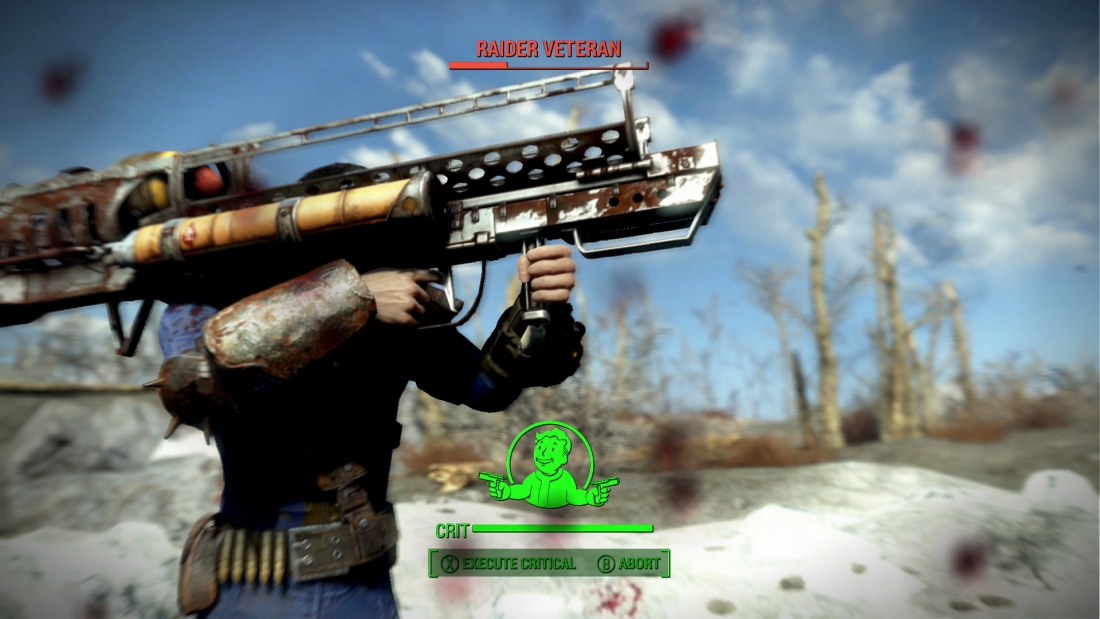What may be the biggest game of 2015 is finally here with the launch of Fallout 4 this week. Set in Boston 200 years after a nuclear war, Bethesda's latest open world action-RPG is the Fallout series' fifth major instalment and along with touting a list of new features, the developer has teased gamers with details about the graphics technology in Fallout 4.
As expected, the game uses a modified version of the Creation Engine (first used for Skyrim in 2011), which now includes enhanced dynamic lighting thanks to a physically-based deferred renderer, allowing the developers to create natural reflections based on an object's material.
The updated Creation Engine includes a range of other new graphics features, such as an updated materials system and new cloth simulations, as well as dynamic post-process techniques and upgrades to the virtual camera including depth of field.
Rendering technologies such as tiled deferred lighting, screen space reflections, bokeh depth of field, height fog, filmic tonemapping, dynamic dismemberment using hardware tessellation, gamma correct physically based shading have all been used.
Fallout 4 also uses volumetric light effects from Nvidia, which creates a natural atmosphere in the game depending on the time of day and the weather. This effect uses hardware tessellation and although it was developed in partnership with Nvidia, Bethesda claims to have made it work great regardless of your platform.
Learning that Fallout 4 is a Nvidia GameWorks title was a little cringeworthy, but developer Bethesda has remained adamant that there is no funny business going on here and that the game is also well optimized for AMD hardware.
Therefore, we don't expect the Fallout 4 launch to be anything like Assassin's Creed Unity, Batman: Arkham Knight, Project CARS or The Witcher III: Wild Hunt (with HairWorks enabled). Fallout 4 should be more similar to GTA V, a game that is well optimized for a range of hardware thanks to collaborative efforts with Nvidia and AMD.
Bethesda has also stressed that Fallout 4 on PC won't be held back by the console versions, i.e. there's no frame rate cap and you can look forward to superior graphics.
Many eager PC gamers are undoubtedly waiting to see how the game looks and performs so we've put together our usual performance analysis to give you an idea of how Fallout 4 should play on your system...
Testing Methodology
Our test rig was outfitted with an Intel Core i7-6700K to remove CPU bottlenecks that could influence high-end GPU scores.
Using Fraps we recorded 120 seconds of gameplay starting at the gas station where you meet your new best friend "Dogmeat". We then walk down the road to the town of "Concord" where we did a lap of the town and ran through a skirmish with a few raiders, which is where the frame rate often fell to its lowest value.
Fallout 4 was tested at three resolutions: 1920x1080, 2560x1440 and 3840x2160 using the ultra quality preset. This means TAA was the anti-aliasing method used and anisotropic filtering was set to x16. "Bokeh" depth of field was used and ambient occlusion was set to SSAO (high). Additional rendering features such as screen space reflections, wetness, rain occlusion, motion blur and lens flare were also enabled.
Test System Specs
- Intel Core i7-6700K (4.00GHz)
- 4GBx4 Kingston Predator DDR4-2400 (CAS 12-13-13-24)
- Asrock Z170 Extreme7+ (Intel Z170)
- Silverstone Strider Series (700w)
- Crucial MX200 1TB (SATA 6Gb/s)
- Radeon R9 Fury X (4096MB)
- Radeon R9 390X (8192MB)
- Radeon R9 390 (8192MB)
- Radeon R9 380 (2048MB)
- Radeon R9 290X (4096MB)
- Radeon R9 290 (4096MB)
- Radeon R9 285 (2048MB)
- Radeon R9 280X (3072MB)
- Radeon R9 270X (2048MB)
- Radeon HD 7970 GHz (3072MB)
- Radeon HD 7970 (3072MB)
- Radeon HD 7950 Boost (3072MB)
- Radeon HD 7950 (3072MB)
- Radeon HD 7870 (2048MB)
- GeForce GTX Titan (6144MB)
- GeForce GTX 980 Ti (6144MB)
- GeForce GTX 980 (4096MB)
- GeForce GTX 970 (4096MB)
- GeForce GTX 960 (2048MB)
- GeForce GTX 950 (2048MB)
- GeForce GTX 780 Ti (3072MB)
- GeForce GTX 780 (3072MB)
- GeForce GTX 770 (2048MB)
- GeForce GTX 760 (2048MB)
- GeForce GTX 750 Ti (2048MB)
- GeForce GTX 680 (2048MB)
- GeForce GTX 660 Ti (2048MB)
- Microsoft Windows 10 Pro 64-bit
- Nvidia GeForce 358.91 WHQL
- AMD Catalyst 15.11 Beta


